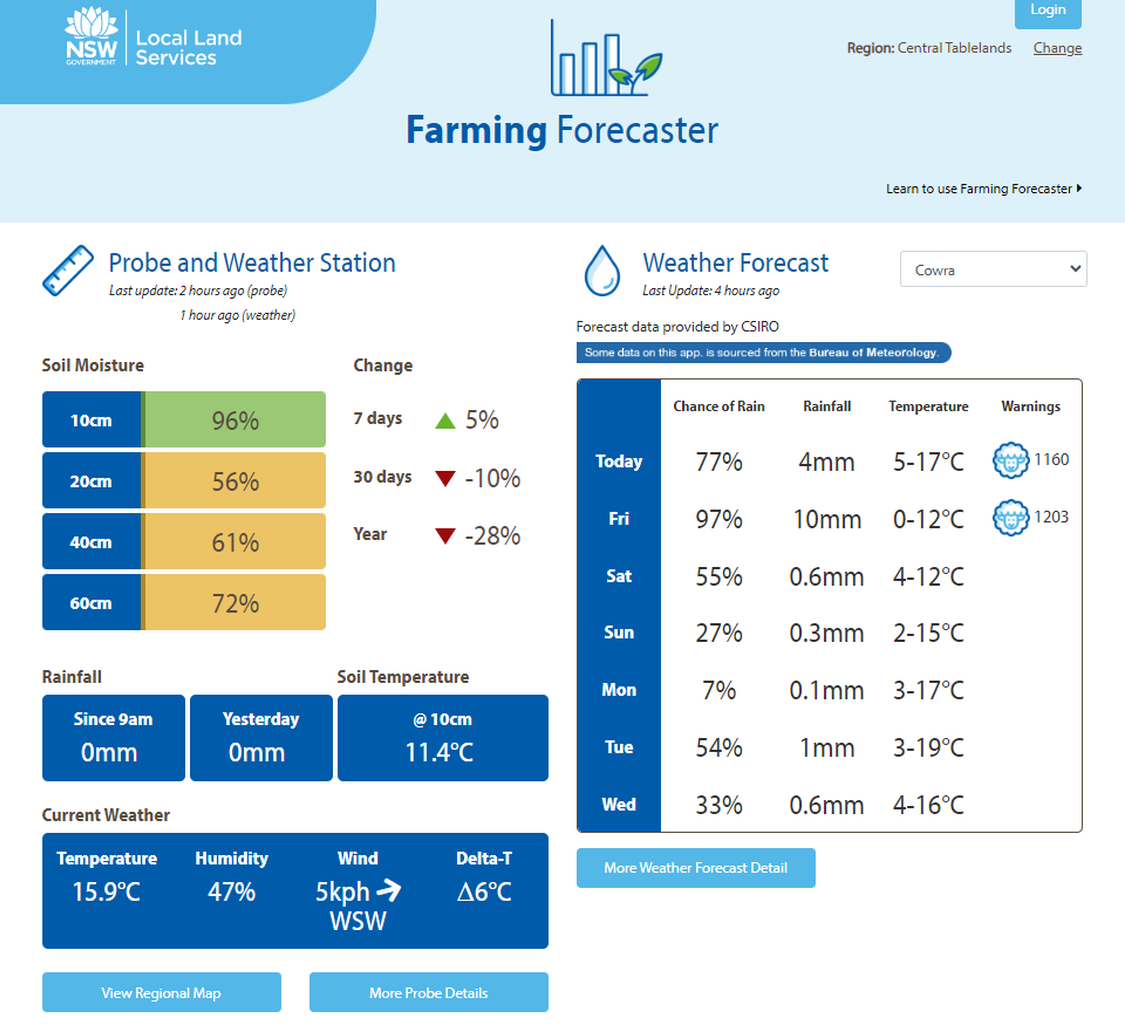The current seasonal conditions and implications for farmers was presented by Phil Graham of Graham Advisory via Meat and Livestock Australia’s Productivity and Profitability Webinar series last month.
Mr Graham ran through a range of different online tools currently available to producers to help them assess current conditions and forecasts, and the impact that will have on their spring.
But first, Mr Graham looked at pasture growth in relation to operating profit (dollars per hectare), using 40 years of weather data.
“If we start looking at the impact on operating profit, whether it is a tight spring or a big spring [as long as its not a failed spring] doesn't make much difference to profitability,” he said.
Of course the other influence was the variation of markets, which were harder to account for.
“But we don’t need big springs to make money…the bigger the spring the lower the pasture quality, the lower the digestibility and we’ve all seen that over the past three or four years.
“If spring is on the tight side, quality is better therefore stock do better.
“All you need to think about at present is am I going to get a spring - forget about needing a big spring.”
Mr Graham said three main things controlled the size of the spring, being soil moisture at the end of winter, herbage mass at the end of winter, and rainfall in spring.
Livestock weight going into spring also played a role, but was less impactful.
Tools Mr Graham gave a crash course in to see how the season was faring in each region included the root zone soil moisture data and rainfall predictions available on BOM; the Agriculture Victoria soil moisture monitoring tool, and Farming Forecaster.
Launched in 2020, Farming Forecaster provides a collection of pasture forecasts across a number of regions in NSW, Tasmania and Western Australia - and is expanding to other areas.
The system brings together relevant weather, soil moisture, pasture production and livestock performance information, using publicly available data from local on-farm soil moisture probe and weather station networks.
Along with CSIRO's farm simulation modelling tool Grass Gro it produces real-time updates of pasture conditions and forecasts into the next four months.
After looking at the tools, Mr Graham said for those who assess the upcoming spring to be poor, they should already be deciding up and implementing a strategy to get through.
“If your assessment was good you don’t need to make any changes to your enterprise, all you are going to do is react to the changing pasture conditions over summer and make decisions about when you are going to get stock off…in a position where you have flexibility,” he said.
“I think it is highly likely you will be feeding stock at the end of summer and into autumn, but at the end of the day that isn’t unusual and if you have to feed stock for two-three months it is a vastly different situation than having to do it for six months.
“And for those that ended up 50/50 well all you can do is keep assessing it on a weekly basis until you decide what your position is - but please be realistic and honest with your assessment…sometimes it is of great value to talk it through with someone you respect and someone you trust.”
Mr Graham’s last piece of advice for producers was to remember that every dry event is different.
“The plan you use in 2007 or 2019 mightn’t be the plan you should use in 2023 - remembering that in 2019 stock prices were through the roof, so we could make destocking decisions and money we got was substantial, that’s not the case in 2023,” he said.
